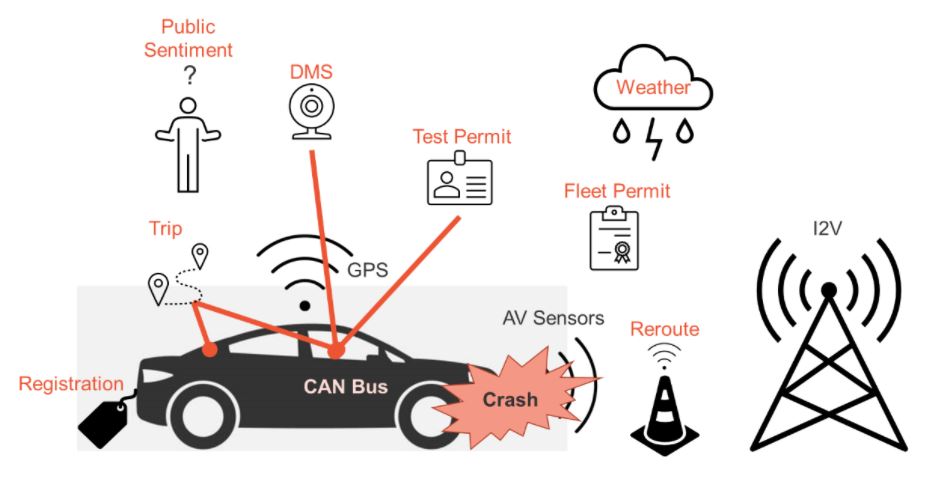Planning for Advanced Technology Data Readiness
State DOTs use large amounts of data for a variety of reasons, including tracking crashes, recording roadway and driver characteristics, cataloguing vehicles, and making data-driven decisions about mobility and safety. These activities are performed using a variety of existing tools that collect, store, and analyze data from a variety of sources. The arrival of connected and automated vehicles (CAV) will undoubtedly disrupt these systems; so, it is important to prepare for the changes in data requirements that will occur as a result of CAV deployment in North Carolina by understanding how our data will be affected and to prioritize our responses.
The term “data” can mean different things to different stakeholders. As a result, the project team has developed a framework for cataloguing an inventory of connected and automated vehicle data elements. A few of the elements identified are depicted in Figure 1, below.

The elements, which were identified through a comprehensive review of current state and federal reports on CAV data activities, as well as interviews with stakeholders in other states, were organized into seven categories:
Vehicle. Vehicle data includes the vast amount of real-time operational data produced by automated vehicle systems.
Infrastructure. This data category describes the Physical Infrastructure that is needed to support the CAV operations. Data elements under Physical Infrastructure can be further subdivided into two main sub-categories, i.e., Roadside Safety Equipment and Communication.
Traffic. Traffic data describes real-time performance of vehicles in a specific area, such as average throughput, closures and restrictions, and travel advisories.
Operational Domain. The operational domain defines the functional ranges for automated driving systems, which determines where and when and under what conditions CAVs are able and permitted to operate.
Fleet. Fleet data describes related groups of CAVs and includes permits that allow testing or deployment in a particular area.
Person. This data category describes characteristics of individual people. Examples include permit data that certify the qualifications of test drivers, the dynamic output from driver monitoring systems (DMS) collected when operating an AV, and the broad range of survey data collected to understand community opinions about AVs.
Crash. While CAVs have enormous safety potential, they will inevitably get into collisions. When that happens, there will need to be a way to collect and record the crash data.
In the first phase of Project 5, the team is creating a detailed inventory of CAV data elements for each of the seven categories. In the next phase, we will work with the NC DOT to identify which ones will affect NC DOT transportation systems.
